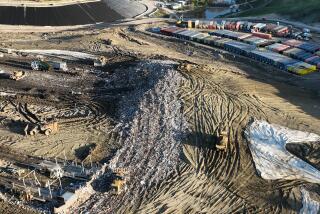A National Disgrace for Our National Treasure
What former Secretary of the Interior Walter J. Hickel once said was unthinkable has now occurred. The United States government is polluting the greatest symbol of our national character: the Grand Canyon.
The National Park Service concluded in April that “visibility at the Grand Canyon between November and March of each year is perceptibly degraded by man-made pollution at least 15% of the time (21 days) and perhaps as much as 30% of the time (42 days) . . . .”
The effects of the pollution are dramatic. The features and colors of the canyon are obscured and muted by the sulfate-laden haze for approximately 42 days of the winter months. On the worst of those days, the opposite rim of the canyon is virtually invisible. Good visibility is one of the park’s critical values. As Jack Davis, the park’s superintendent, has said, “Grand Canyon is here to be seen and to be seen clearly.”
There is no real question where the sulfur haze is coming from. The National Park Service clearly places the responsibility for the pollution on emissions from a power plant 20 miles from the park, a plant one-quarter owned by the U.S. government.
The coal-fired plant came on line in 1974, before technology for controlling emissions of oxides of sulfur had been tested on large power plants. The owners (the U.S. Bureau of Reclamation and several utilities, including the Los Angeles Department of Water and Power) promised that the plant would be designed so that additional control equipment, including devices for removal of oxides of sulfur, could be added when developed by advancing technology. The technology to reduce these emissions by as much as 90% has been available for several years, but the owners continue to resist moves to require its installation.
Ten years of inaction precipitated the intensive and expensive National Park Service pollution study. It unequivocally assigned responsibility for sulfur haze to the plant, but the response of the owners, predictably, has been to call for more studies.
Short of a coalition of senators taking an interest, the official who can best move the owners off the mark is William K. Reilly, the administrator of the Environmental Protection Agency. But Reilly may be forced to confront the Interior Department and the White House in order to enforce the EPA’s visibility program in the West. Should the Interior Department and the White House oppose pollution reductions at the plant, Reilly will be left with a cloud of government hypocrisy over his agency. The EPA will be left trying to require private plants to control emissions while the largest single source of sulfur in the West--a plant owned in part by the government--refuses to reduce its own.
The cost of action? About 38 cents a year per taxpayer for the life of the plant. That’s about $5 per taxpayer spread over 15 years. The cost of inaction is measurable, too: depriving Americans of what Frederick Law Olmsted called the “invocation of the contemplative faculty”--the ability to see 100 miles through the ether of the Grand Canyon, past Bright Angel Canyon and Brahma’s Temple into the tumult and tranquility of the human soul.
More to Read
Sign up for Essential California
The most important California stories and recommendations in your inbox every morning.
You may occasionally receive promotional content from the Los Angeles Times.










